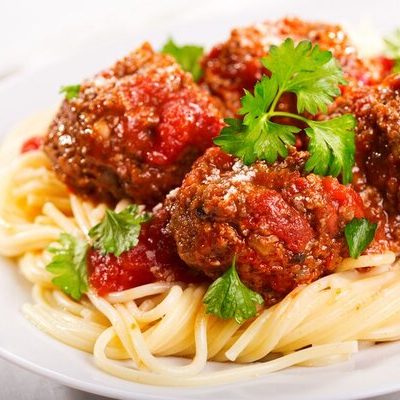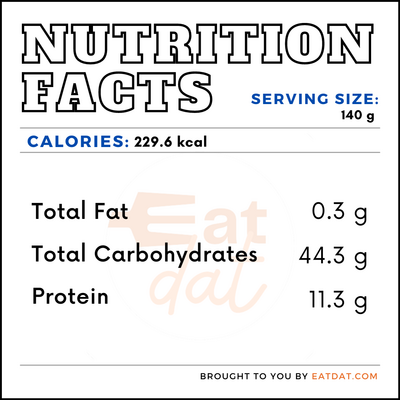
Spaghetti
What is Spaghetti?
Spaghetti is a long, thin pasta with a cylindrical shape, commonly used in Italian cuisine. This pasta is typically made of milled wheat, seasoning, and minerals. The standard type of wheat used to make this pasta is durum wheat flour.
- In 2019, 267.89 million Americans used spaghetti or pasta sauce.
- This figure is estimated to rise to 275.57 million by 2023.
The top seven pasta brands, according to Good Housekeeping, are:
- Barilla
- De Cecco
- Banza
- 365 Everyday Value
- Pastificio Di Martino
- Rustichella D’Abruzzo
- Rana
Origin of spaghetti
Spaghetti as pasta has its roots in Greece and around the regions of the Middle East. Italian pasta likely originated from the Arab meal called “itriyya“. This meal was instrumental to Arab traders as they moved around the world outside of Europe. They brought this food into Sicily when they conquered and occupied it in the 7th century AD. When the Arabs left Sicily, their pasta recipes remained with the natives of the region.
After that, lower-class locals experimented with the recipes and the dish gradually moved to the upper classes. By the 12th century, industrial advancement allowed the large-scale production of pasta and its related products. These foods became known to the world when Italian and Sicilian immigrants reached the US between the beginning and middle of the 20th century. American soldiers also contributed to this food’s popularity when they told the tales of pasta after returning from WWII. Today, spaghetti is one of the most popular types of pasta.
Function
Spaghetti serves many functions in the kitchen. This food can be combined with sauces to make an array of flavorful dishes. People also consume it with various types of meat and cheese. It is also commonly used in recipes for soups and salads.
Nutrition
A one-cup (140g) serving of spaghetti offers:

This pasta also provides the following health benefits:
- It is a rich source of fiber.
- This food is cholesterol-free and has a low sodium content.
- It is rich in carbohydrates and supplies energy.
Commercial production
Spaghetti’s commercial production involves mixing milled wheat, water, egg, and other optional ingredients for added flavor. The manufacturers of this food prefer to use ground durum wheat flour. The water used in the process has to be clean and free of germs. A high capacity auger extruder is equipped with discs to shape this pasta into its cylindrical shape. The final product is dried and packaged for sale.
Application
Cooking spaghetti is simple using following the steps:
- First, boil clean water in a pot and add a tablespoon of salt to it. As a rule, it’s best to add one tablespoon per one pound of pasta.
- Next, check the pasta pack’s instructions to know the recommended cooking time.
- Then, when the water is boiling, add the pasta strands into the pot.
- When the time is over, bite a strand to see if it is cooked and firm. Boil the food further if you want it softer. If you want to prepare the pasta al dente, remove it from the water about two minutes before the recommended cooking time. This will make the pasta soft and chewy without overcooking it.
- Finally, drain the water and add the sauce of your choosing.
Here are some helpful tips to know while preparing this food.
- Don’t add oil to the boiling water. The oil will make your sauce slip off the pasta.
- Stir the pasta while cooking to prevent them from sticking together.
- Avoid breaking the pasta strands when you add them to the water.
One way to store leftovers of this food is to place them in a container, add a little oil or butter, and place them in the refrigerator. This way, they can stay in the fridge for three to five days. Anything longer than that will make this food lose its flavor. However, this pasta can last for about three months in the freezer.
Spaghetti recipes
This classic pasta can be enjoyed in many ways. Here are a few recipes for this food:
- Spaghetti Bolognese
- Cacio e Pepe
- Spaghetti and Meatballs
- Artichoke and Sardine Spaghetti
- Chicken Spaghetti
FDA regulation
The FDA has standards of identity for various types of spaghetti. This includes the milk, vegetable, whole wheat, and egg variants of this food. Generally, the organization defines this food as a macaroni product that has a chord or tube shape with a diameter of more than 0.06 inches, but less than 0.11 inches. The FDA is also in charge of the production and labeling of this pasta and its related products in the USA.
References
“U.S.: Usage of Spaghetti / Pasta Sauce 2011-2023.” Statista, Statista, 20 Aug. 2019, www.statista.com/statistics/281235/us-households-usage-of-spaghetti-pasta-sauce-trend/.
Kristen, Eppich. “How To Cook Pasta: 10 Tips And Tricks.” chatelaine.com, chatelaine blog, 14 June 2015, www.chatelaine.com/recipes/how-to-cook-perfect-pasta/.
Larsen, Linda. “Follow These Tips to Store Leftover Cooked Pasta.” thespruceeats.com, the Spruce eats blog, 25 Mar. 2020, https://www.thespruceeats.com/how-to-store-leftover-cooked-pasta-482405.
“CFR – Code of Federal Regulations, Title 21.” accessdata.fda.gov, U.S. Food and Drug Administration, 1 Apr. 2019, https://www.accessdata.fda.gov/scripts/cdrh/cfdocs/cfcfr/CFRSearch.cfm?CFRPart=139&showFR=1&subpartNode=21:2.0.1.1.29.2
